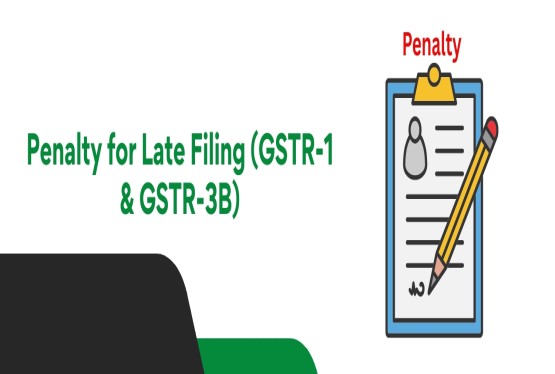Filing income tax returns (ITRs) accurately and within the due dates is a legal obligation for taxpayers in India. However, taxpayers often miss out on deadlines or make mistakes while filing their original, revised, or belated returns. To address such situations, the Income Tax Department introduced the concept of the Updated Return through Form ITR-U. This initiative was launched in the Union Budget 2022 and has now become a vital tool for tax compliance. This article explains in detail what ITR-U is, who can file it, and how to go about filing it in a step-by-step format.
What is ITR-U?
ITR-U stands for Updated Income Tax Return. It is a special return form that enables taxpayers to update their income tax return if they have made any errors, omissions, or have missed filing the return altogether.
This form is applicable to all individuals who either failed to file an ITR or need to correct their already filed returns. It provides an opportunity to rectify mistakes without facing harsh penalties or prosecution. Under Section 139(8A) of the Income Tax Act, a person can file ITR-U within two years from the end of the relevant assessment year.
For instance, if a taxpayer failed to file ITR for the Assessment Year 2022-23 (FY 2021-22), they can still file the updated return using ITR-U up to 31st March 2025.
Budget 2025 Update on ITR-U Filing Deadline
One of the key changes announced in the Union Budget 2025 was the extension of the ITR-U filing window. The earlier limit of 2 years from the end of the assessment year has now been extended to 4 years.
This update allows more flexibility and encourages voluntary compliance. The updated deadlines ensure that taxpayers have enough time to revisit and correct their tax submissions. However, there is an additional tax liability that needs to be paid along with the ITR-U. The additional tax is calculated based on how late the updated return is filed.
Additional Tax on Updated Income
The following table explains the additional tax applicable based on the time elapsed since the end of the relevant Assessment Year (AY):
| ITR-U Filed Within | Additional Tax Payable |
| 12 months | 25% of additional tax (tax + interest) |
| 24 months | 50% of additional tax (tax + interest) |
| 36 months | 60% of additional tax (tax + interest) |
| 48 months | 70% of additional tax (tax + interest) |
Note: Additional tax is calculated only on the additional income declared in the updated return and not on the total income.
Who Can File ITR-U?
Any taxpayer who wants to rectify mistakes or file a return that was previously missed can file ITR-U. The return can be filed for any of the following reasons:
• Did not file the return originally
• Omitted some income
• Declared income under the wrong head
• Paid tax at an incorrect rate
• Needs to reduce carried forward loss
• Needs to reduce unabsorbed depreciation
• Needs to reduce tax credit under Section 115JB/115JC
It is important to note that only one updated return per assessment year can be filed by a taxpayer.
Who Cannot File ITR-U?
There are certain restrictions on the filing of ITR-U. You cannot file an updated return in the following cases:
• If an updated return has already been filed for the relevant AY
• If you are filing a nil return or loss return
• If the updated return will lower your tax liability
• If the return leads to a higher refund
• If search or survey proceedings under Sections 132/133A have been initiated
• If books, assets, or documents have been seized under Section 132A
• If assessment/reassessment/revision/re-computation is pending or completed for that year
• If there is no additional tax payable (i.e., if your liability is already adjusted through TDS or advance tax)
Also, if you are reducing losses, unabsorbed depreciation, or tax credit carried forward to subsequent years, you must file an updated return for each subsequent affected year.
Time Limit for Filing ITR-U
The deadline to file ITR-U is now four years from the end of the relevant assessment year. Below is a table summarizing the last dates to file ITR-U for previous years:
| Financial Year | Assessment Year | Last Date to File ITR-U |
| FY 2020-21 | AY 2021-22 | 31st March 2024 |
| FY 2021-22 | AY 2022-23 | 31st March 2025 |
| FY 2022-23 | AY 2023-24 | 31st March 2026 |
| FY 2023-24 | AY 2024-25 | 31st March 2027 |
Restrictions on ITR-U
Although ITR-U provides a helpful way to amend returns, it has some limitations:
• You cannot use ITR-U to claim additional refunds
• You cannot use it to shift tax heads if that reduces your liability
• You cannot use ITR-U to offset your income with past losses if no tax is payable
Components of the ITR-U Form
The ITR-U form consists of two main parts:
Part A: General Information
This section requires basic details:
• PAN and Aadhaar
• Assessment Year
• Whether any return was previously filed
• Section under which the earlier return was filed (e.g., 139(1))
• Acknowledgment Number and Date of the original return
• Reason(s) for updating the return (multiple options allowed)
• Time elapsed since AY end (choose 12–24/36/48 months accordingly)
• Whether carried forward losses or depreciation will be affected
Part B: Computation of Total Updated Income and Tax Payable
This section involves computing the updated income and tax:
• Income under each head (without detailed breakup)
• Total Income as per earlier return
• Income as per updated return
• Tax already paid
• Additional tax payable (25%, 50%, 60% or 70%)
• Fee paid earlier for late filing
• Interest under sections 234A/B/C
• Self-Assessment Tax paid under section 140B
How to File ITR-U?
You can file ITR-U online using the Income Tax e-Filing portal. The updated return must be filed along with the applicable ITR Form (ITR 1 to 7). Here is a step-by-step guide:
1. Log in to the Income Tax e-Filing Portal.
2. Go to ‘e-File’ > ‘Income Tax Return’ > ‘File Income Tax Return’.
3. Select the assessment year and choose ITR-U.
4. Attach the relevant ITR form and fill in the additional income details.
5. Make the Self-Assessment Tax payment under Section 140B before filing.
6. Enter the challan number and payment details.
7. Submit the ITR-U and complete the verification process.
Modes of Verifying ITR-U
The verification of the ITR-U can be completed using any one of the following:
• Aadhaar OTP
• Electronic Verification Code (EVC)
• Digital Signature Certificate (DSC) (mandatory for audit cases)
How to Calculate Tax Payable While Filing ITR-U?
The net tax liability while filing ITR-U is computed as:
Net Tax Liability = Tax Payable + Interest + Late Fee + Additional Tax – TDS/TCS/Advance Tax/Tax Relief
Below is a breakdown of the calculation:
| Particulars | Source | Amount (in Rs.) |
| Tax on Additional Income | Modified ITR | XXXX |
| Interest (234A/B/C) | Modified ITR | XXXX |
| Late Fee (234F) | Modified ITR | XXXX |
| Taxes Paid/TDS | Previous Payments | XXXX |
| Refund Claimed Earlier | Original Return | XXXX |
| Aggregate Tax Liability | (A + B + C + E - D) | XXXX |
| Additional Tax (25%/50%/60%/70%) | XXXX | |
| Net Amount Payable | F + G | XXXX |
Conclusion
The ITR-U form is a taxpayer-friendly initiative that enables voluntary compliance and error correction. It helps avoid penalties and legal consequences while ensuring transparency in tax reporting. However, it must be filed with due diligence, proper computation, and within the prescribed deadlines. Remember, ITR-U is not meant to help you reduce taxes or increase refunds—it is purely to correct underreported income or missed returns.
If you are unsure or need help with filing, consult with Compliance Calendar’s experts through mail at info@ccoffice.in or Call/Whatsapp at +91 9988424211.
Frequently Asked Questions (FAQs)
Q1. What is ITR-U and what is its purpose?
Ans. ITR-U, or Income Tax Return - Updated, is a form introduced by the Indian government to allow taxpayers to rectify errors or omissions in their previously filed Income Tax Returns (ITRs). It provides an opportunity to voluntarily correct mistakes and ensure accurate tax filings.
Q2. Who is eligible to file ITR-U?
Ans. Taxpayers who have either filed their original returns or missed the initial filing deadline are eligible to file ITR-U if they need to correct issues such as:
-
Omission or misreporting of income.
-
Incorrect tax computation.
-
Wrong selection of income head.
-
Reduction of carried forward loss.
-
Reduction of unabsorbed depreciation.
-
Reduction of tax credit under sections 115JB/115JC.
Q3. Are there any situations where ITR-U cannot be filed?
Ans. Yes, ITR-U cannot be filed in certain situations, including:
-
If it leads to a refund or increases the refund amount.
-
Involvement in search or survey proceedings.
-
Assessment proceedings are pending or completed.
-
Cases involving information under specific acts like the Prevention of Money Laundering Act, Black Money Act, Benami Property Transactions Act, or Smugglers and Foreign Exchange Manipulators Act.
Q4. What is the timeframe for filing ITR-U?
Ans. Initially, taxpayers were permitted to file ITR-U within 2 years from the end of the relevant assessment year. However, as per the Budget 2025 update, this period has been extended to 4 years.
Q5. What was the main objective behind introducing ITR-U?
Ans. The main objective behind introducing ITR-U was to provide taxpayers with an opportunity to correct errors or include omitted income in their original ITRs, thereby promoting voluntary compliance and enhancing the accuracy of tax filings without resorting to stringent legal actions.









_crop10_thumb.jpg)


















































































_for_FY_2025-26_crop10_thumb.jpg)












_learn_crop10_thumb.jpg)








_Filing_Due_Dates_for_FY_2024-25_learn_crop10_thumb.jpeg)



























